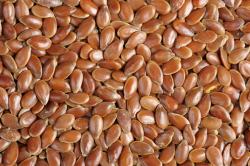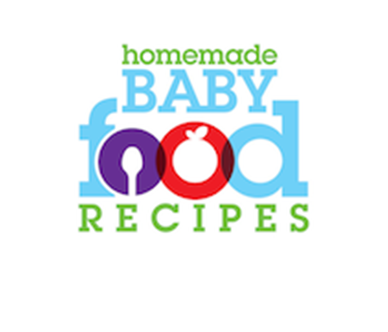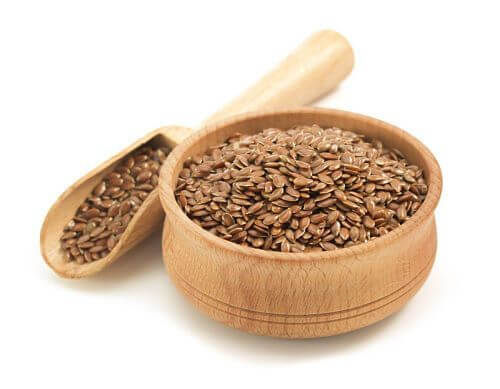Using Flax In Your Baby Food Recipes
Updated: Oct 23, 2023
On this page we’re looking at a very special ingredient that you can quickly and easily add to many of your baby’s meals, and which will give their nutritional value a real boost!
The fabulous food we’re talking about is flax – and if you’ve never considered it as an ingredient in your baby food recipes, then read on to discover just how easy it is to include in your little one’s meals… and the many ways he’ll benefit if you do!
What is flax?

Flax is a plant grown for both its seeds (which are eaten or used to make flaxseed oil) and its fibres (which are used in a variety of manufacturing industries).
Flax seeds are known in some parts of the world as linseeds, and their oil as linseed oil.
There are two kinds of flax seed – golden and brown – and whilst either can be eaten and are roughly equivalent in terms of nutrition, the brown seeds are used more commonly for cattle feed and the golden ones are more often sold for human consumption.
Is flax good for my baby?
Absolutely!
In fact, flax is good for the whole family (although you should speak to your doctor about consuming flax if you are pregnant as its effects during pregnancy are still being studied).
Just take a look at all that flax has to offer…
- Flax is an excellent source of fibre and can both prevent and relieve constipation.
It is believed to be the high fibre content of flax that helps lower cholesterol in adulthood, making it a worthy addition to the diet throughout life! - Flax is rich in Omega 3 fatty acids, which can help prevent inflammation, thereby protecting the body against conditions like asthma, heart disease and arthritis.
It is particularly rich in alpha linolenic acid (ALA), which is important for bone health and especially important for women as it is believed to promote ovulation and to achieve hormonal balance. - Flax is full of antioxidants and is believed to help protect the body against many types of cancer.
Studies are suggesting that it may be particularly beneficial to women as it may offer significant protection against breast cancer. - Eating flax seeds boosts the immune system, helping protect your baby against infection.
- Flax contains B vitamins, manganese, magnesium, phosphorus, copper and folates.
More good news is that flax is gluten free, making it safe to use if your baby has gluten intolerance or Celiac disease.
Flax and essential fatty acids
In the diet, fatty acids are known as ‘essential’ because the body needs them to be healthy, but is unable to make them for itself.
For that reason, it is essential that foods containing those fatty acids form a regular part of the diet.
Unlike other plant seeds, which tend to be abundant in Omega 6 fatty acids but contain less Omega 3 fatty acids, flax seeds contain plenty of the Omega 3 variety!
Omega 3 fatty acids, which are the type found in fish, play a particularly important role in infant growth and development.
So – if your baby doesn’t like fish – offering him flax instead is a simple way to ensure that he’s still receiving all the important Omega 3 fatty acids that he needs.
Flax and constipation
Flax can act as a natural laxative, an effect that can be quite pronounced (in other words, too much flax can cause diarrhea!).
An important point to note is that flax can cause an obstruction in the bowel in babies (or adults) if it is given with an insufficient intake of liquid.
It’s important to give baby plenty of breast milk, formula (or even supplemental water after 6 months of age) when giving him flax – although, of course, ensuring an adequate intake of fluids is an important part of preventing constipation in any case!
We’ll discuss just how much flax to offer later in this article.
When can my baby eat flax?
We don’t recommend adding flax to the very first foods that you offer your baby.
Why?
Well, as we mentioned earlier, flax seeds can loosen the stools and may also cause a little gas (wind).
To avoid any digestive discomfort, it’s best to wait to introduce them until your baby is already enjoying a range of fruits and vegetables (probably at around 7 months of age).
Please remember that you should always check with your doctor before introducing any new foods to your baby.
Buying and storing flax
Flax seeds are available at grocery stores, health food/natural living stores and online.
They are usually sold whole or ground (milled).
We recommend buying the seeds whole – they will last longer (because their precious interior is protected by their outer shell), they are cheaper and their nutrients are intact (as opposed to pre-ground flax seeds, which begin to decline in nutritional value as soon as the interior of the seed is exposed to light and air).
You can then grind the flax seeds yourself, as and when you need them.
To do this, you can use either a coffee/spice grinder or a plain old food processor.
Whole seeds can be found pre-packaged or sometimes loose, in bulk bins.
If you buy them from a bulk bin, make sure the bin is hygienically covered and the store is a busy one (so you’ll know the seeds haven’t been sitting there for weeks!).
Once home, you can store whole seeds in a cool, dark place where they’ll keep for up to 12 months.
Because the oil content of flax seeds is so high, pre-ground flax seeds can go rancid in just a week if stored at room temperature.
So – if you buy your flax seeds pre-ground – it’s important to ascertain that they’re fresh.
Ideally, they should be in the refrigerated section of the store.
Vacuum packed ground seeds are good if you can find them, and the bag should be opaque, because exposure to light leads to more rapid deterioration and nutrient loss.
Keep pre-ground flax seeds (or flax seeds that you’ve ground yourself) in an airtight container in the fridge, for up to 30 days.
If your ground flax tastes at all bitter, then throw it away… bitterness is a sign of rancidity!
Flaxseed oil is best purchased in opaque bottles, from the refrigerated section of the store.
As with ground flax seeds, flaxseed oil is highly perishable and will lose flavour and nutrients when exposed to high temperatures and light.
Preparing flax seeds for your baby
Flax seeds should be finely ground for your baby.
Not only does this remove the choking risk presented by offering whole seeds, grinding the seeds makes the nutrients they contain more available to the body (whole seeds will just pass right through!).
For older children and other family members, whole flax seeds can be added to bread, tossed in a salad etc – but they should be properly chewed to release their benefits.
Flaxseed oil (linseed oil) can be added to foods just as it is – but please note that it is NOT a cooking oil.
Instead, you should add it to foods after you’ve cooked them.
Which is better – whole (ground) flax seeds or flaxseed oil?
Flax seeds contain more nutrients than flaxseed oil.
Whilst the oil contains the essential fatty acids, it does not contain many of the antioxidants, fibre and protein of the seeds.
Using flax in your baby food recipes
Flax has a mild, sweet, faintly nutty flavour which is very easy to incorporate into all sorts of dishes without your baby even noticing!
When you first offer ground flax to your baby, use as little as 1/s tsp to start and introduce it with a food your baby is already enjoying (as per the four day rule).
By offering just a little, you will be able to limit any potential digestive discomfort that the flax may cause (gas/wind/loose stools etc).
As your baby becomes accustomed to consuming flax, you can increase the amount you offer to a maximum of around 2 to 3 tsp per day.
Here’s how you can include that valuable quota in your baby’s diet!
- Add ground flax to your baby’s fruit or veggie purees.
- Sprinkle it into your baby’s soups and stews.
- Add ground flax seeds or a little flaxseed oil to smoothies.
- Sprinkle ground flax onto soft, cooked vegetables that you plan to serve as finger foods.
- Use it to top homemade yogurt.
- Mix it with cottage cheese, cream cheese, Ricotta cheese or yogurt cheese, then combine with fresh herbs and pureed veggies to create super-nutritious dips and spreads.
- Use ground flax to replace up to 25% of the flour in a recipe when baking.
- Stir ground flax into baby’s cereal.
- Mix it with breadcrumbs or oatmeal to use as a coating for breaded fish, chicken nuggets etc.
- Use it instead of egg in recipes where the egg is the binding agent.
- To do this, combine 1 tbsp ground flax with 3 tbsp water.
- Use it instead of breadcrumbs as a binding agent for foods like patties, meatballs and meatloaf.
- According to the Canadian Flax Council, the high oil content of flax seeds makes them an ideal replacement for oil or shortening in baked goods recipes.
Simply use 1 cup of ground flax in place of 1/3 cup of oil – but bear in mind that the food may brown more rapidly as a result.
Baby food recipes with flax
Flax ‘N Banana Berry Breakfast
3 tbsp cooked oatmeal (porridge)
1/2 ripe banana
1 tbsp fresh blueberries
1 tsp ground flax
- Place all ingredients in a food processor and blend until smooth.
- Serve warm or chilled.
Cooling Cantaloupe Yogurt
2 tbsp natural yogurt
2 tbsp grated Cantaloupe
pinch ground ginger
drop vanilla extract
1 tsp ground flax
- Combine all the ingredients to create a delicious dessert. Serve chilled.
Cheesy Pumpkin Bites
These make a wonderful, soft finger food for self-feeders!
2 tbsp homemade yogurt cheese or cream cheese
1 tbsp pumpkin puree
1 tsp snipped chives
1 to 2 tsp ground flax
- Combine the cheese with the pureed pumpkin and chives, then stir in enough ground flax to give a soft rolling consistency.
- Roll into balls, chill, then serve.
Whole Wheat Pretzels
A soft and fluffy finger food for older babies.
4 oz (1 cup) whole wheat flour
4 to 8 oz (1 to 2 cups) all purpose (plain) flour
2 tbsp sugar (please note that this is necessary to activate the yeast)
1 pack active dried yeast (1 tbsp)
8 fl oz (1 cup) warm water
1 tbsp melted butter
1 1/2 oz (1/4 cup) ground flax seeds
1 egg yolk, beaten
- Preheat the oven to 350 deg F (170 deg C).
- In a small bowl, mix the yeast with the warm water and set aside.
- Meanwhile, mix half a cup of the whole wheat flour and half a cup of the all purpose flour with the sugar and ground flax seed.
- Make a well in the middle of the flour and add the yeast/water mixture as soon as it begins to look frothy.
- Mix well, then add the rest of the whole wheat flour and as much of the all purpose flour as you need to make a soft dough.
- Knead on a floured surface for 5 mins.
- Put the dough in a greased bowl, cover with a clean tea towel and leave until doubled in size (around 1 hour).
- Punch the dough down, then knead for a further 5 mins.
- Divide into 12 equal balls, then roll each ball into a long ‘sausage’.
- Shape each ‘sausage’ into a pretzel, then place on a well greased baking sheet.
- Cover and set aside to rise for 10 mins in a warm place.
- Finally, brush with the egg yolk and bake in the oven until golden (around 15 mins).
From our blog:
Pumpkin and Apple Muffins with Flaxseeds


